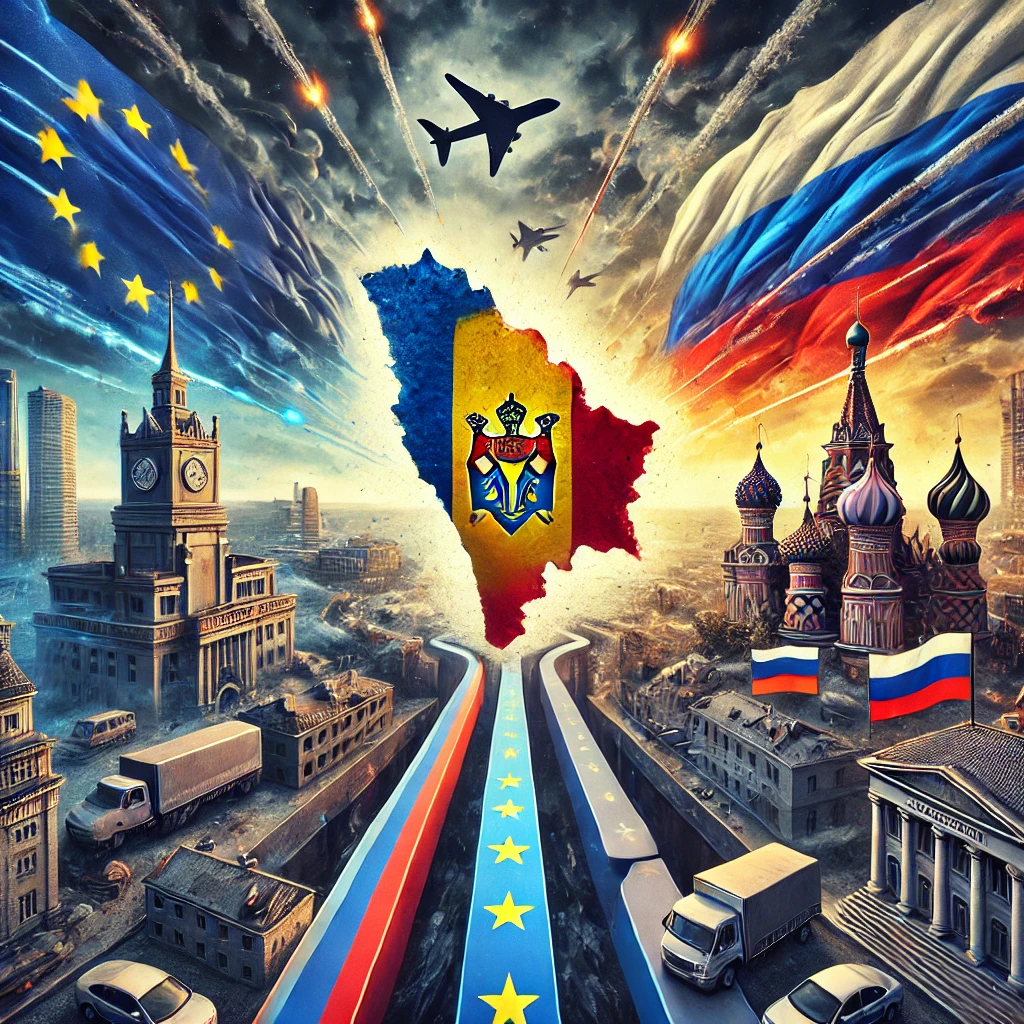In the ongoing geopolitical tensions between Russia and the United States, Moldova finds itself caught in the crossfire. Moldova, a small country nestled between Ukraine and Romania, is at a critical juncture, with pressure mounting from both the European Union and Russia to take sides. The reality, however, is more complex—Moldova shares a historical and geographical connection with Russia, while also aspiring to forge stronger ties with the European Union. Yet, as events unfold, it becomes clear that Moldova may not have the luxury of decisively choosing one side over the other.
Moldova’s Strategic Importance
Moldova’s strategic location, bordering Ukraine and hosting the breakaway region of Transnistria—where Russian military forces remain stationed—places it in a precarious position. As much as the European Union seeks to draw Moldova into its fold, the country’s deep-rooted historical and economic ties with Russia cannot be ignored. The ongoing war in Ukraine has only intensified the spotlight on Moldova, with many fearing that any decisive move towards the EU could provoke a destabilising response from Moscow.
The leadership of Moldova, led by pro-European president Maia Sandu, is pushing for a future that aligns with the European Union. However, Moldova’s population is divided. While a majority supports closer ties with Europe, a significant proportion maintains strong loyalties to Russia, particularly in regions like Transnistria and Gagauzia, where pro-Russian sentiment runs high. These internal divisions make it extremely difficult for Moldova to take a clear stance without risking internal upheaval or alienation from one of its key partners.
Russia: A Constant Presence
Russia’s influence in Moldova is both overt and covert. From military forces in Transnistria to alleged disinformation campaigns and financial meddling in local elections, Moscow is deeply embedded in Moldova’s political landscape. The Russian government has accused Moldova of curbing the rights of its pro-Russian citizens, while Moldova continues to highlight what it views as Russian interference in its electoral processes. Russian military presence in Transnistria remains a point of tension, with Moldova unable to assert full sovereignty over the region while it remains under Moscow’s shadow.
Yet, despite these tensions, Russia and Moldova share more than just a history. Much of Russia itself lies within the European continent, meaning that isolating Russia from Europe entirely is a geographic and political impossibility. The European Union’s attempts to expand its influence in Eastern Europe cannot ignore the reality that Russia remains a significant player on the continent, with historical, cultural, and economic ties that run deep across borders.
Moldova’s Balancing Act
Moldova’s leadership is under immense pressure to choose between the European Union and Russia, but the country’s future may not lie in such a black-and-white decision. The nation’s proximity to Russia, along with the presence of a large Russian-speaking population, complicates any potential breakaway from Moscow’s sphere of influence. President Maia Sandu has consistently advocated for closer ties with the EU, yet she cannot afford to fully alienate Russia, given the potential repercussions both economically and politically.
From the United States’ perspective, Moldova’s alignment with the EU is seen as part of a broader strategy to counter Russian influence in Eastern Europe. However, this view overlooks the fact that Moldova, unlike some other former Soviet republics, does not have the luxury of fully distancing itself from Moscow. Both Russia and Moldova share the same geographical region, and any attempt to force Moldova into a corner risks inflaming regional tensions further.
The Role of the European Union
The European Union, meanwhile, has a vested interest in stabilising Moldova and integrating it into the broader European framework. However, even the EU cannot afford to fully dismiss Russia. The reality is that a substantial part of Russia lies within the geographical boundaries of Europe, and isolating such a major player could backfire in the long run. As Europe expands eastward, it will need to find ways to engage with Russia, not merely push it away.
While Moldova faces immense pressure to choose a side, the European Union itself must recognise that Russia is an unavoidable neighbour and partner in the broader European context. Moldova, straddling these two spheres of influence, serves as a reminder that Europe’s relationship with Russia is not one of simple opposition, but of delicate interdependence.
A Shared Future?
Moldova’s geopolitical reality highlights a broader truth about the European continent—Russia is as much a part of Europe as any other country, and the future of the continent must account for its presence. As Moldova grapples with its position between East and West, it is becoming clear that the country’s best path forward may be one of careful balance, rather than a definitive choice. For the European Union, fostering cooperation with Russia, rather than continuing to treat it as an adversary, may be the key to long-term stability in the region.
